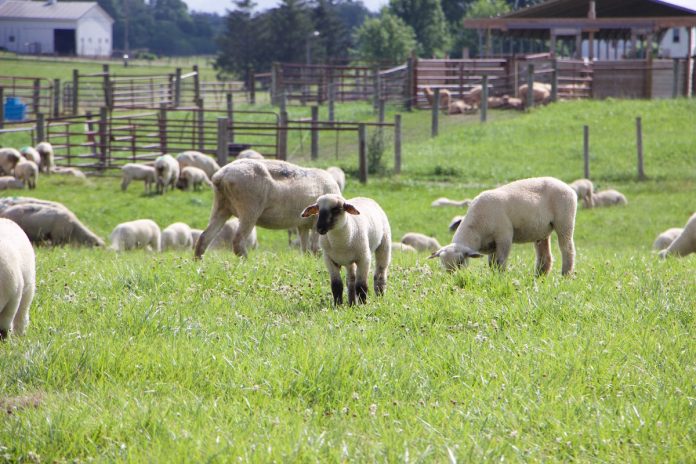COLUMBUS — The high slopes of southeast Ohio and other parts of the state are suited more for grazing animals than for row crops.
“You can put cattle and sheep across those areas and make it productive land,” said Roger High, executive director of the Ohio Sheep Improvement Association (OSIA).
Growing flocks
Many have. Across the state, the number of sheep flocks has grown in the past decade in response to an increasing demand for lamb meat.
Much of the growth has been among Amish farmers in several counties, some of them former dairy producers who took up raising sheep for a chance at higher profits, High said.
Some cattle producers have recently started grazing sheep on the same pasture as their cattle.
And in cities and suburbs in northeast Ohio, some are using lambs to trim their grass instead of pulling out the lawn mower, said Christine Gelley, Ohio State University Extension educator in Noble County.
Demand
Interest in sheep production dwindled in the 1980s and 1990s when lamb prices were low and parasites plagued flocks. But the renewed interest among people wanting to eat lamb has triggered more demand for the meat in the United States.
But much of that demand is filled by imported lamb from Australia, Gelley said.
Sheep day
Ohio Sheep Day is July 14 at the Eastern Agricultural Research Station, 16870 Bond Ridge Road, Caldwell.
Participants can learn to raise healthy sheep, including avoiding parasites, creating an efficient sheep handling system and improving fencing to bar coyotes.
The cost is $15 for OSIA members and $25 for nonmembers; The cost includes lunch. OSIA memberships can be purchased during registration.
For more information, contact High at 614-246-8299, rhigh@ofbf.org, or your OSU Extension county educator.










